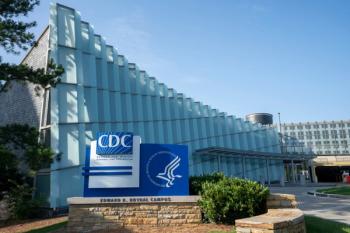
Addressing Acne in Patients of Color
Key Takeaways
- Hair products can exacerbate acne in patients with Afro-textured hair; alternative strategies include water-based formulations and minimizing oil migration to the face.
- PIH prevention is crucial, as dermal pigmentation is resistant to treatment; current guidelines may overlook patients of color, necessitating systemic treatments.
Culturally informed, patient-centered strategies are needed to address acne and hyperpigmentation in patients with skin of color.
Acne care for patients of color requires a personalized approach that accounts for hair care routines, early systemic treatment, and the lasting impact of post-inflammatory hyperpigmentation (PIH), according to Jenna Lester, MD, director of the skin of color program and associate professor of clinical dermatology at the University of California San Francisco.
In a session at the
Impact of Hair Products on Acne in Skin of Color
Hair products can play a significant role in contributing to acne among patients with skin of color, particularly those with Afro-textured or tightly coiled hair, explained Lester. Because sebum doesn’t easily travel down the hair shaft, many patients rely on oils, waxes, and pomades to maintain hair health, products that can inadvertently trigger breakouts. Rather than advising patients to stop using these culturally important products, clinicians should ask about hair care routines and recommend strategies such as using water-based formulations—often labeled as milk or lotion—applying oils only to the hair ends, and adopting the "pre-poo" method to reduce scalp buildup. Additionally, minimizing oil migration to the face is key.
“I often say that hair health, scalp health, and also skin health sometimes can be at odds with one another, but there are helpful ways to have this conversation,” said Lester. “I think this stance of asking a lot of questions and engaging in shared decision-making—which I think we often think of [as] deciding on a medication or on a course that might be challenging—I think it's really useful.”
PIH, Acne Guidelines
Lester also provided an in-depth discussion of PIH in the context of acne, emphasizing that PIH results from increased melanin production and transfer to keratinocytes. Whereas epidermal hyperpigmentation often responds well to topical treatments, dermal pigmentation is more resistant, making prevention critical. Moreover, Lester critiqued the
To address this gap, Lester recommended treating PIH as a scarring equivalent and lowering the threshold for systemic treatments like isotretinoin.
Lester also underscored the importance of sun protection in treating PIH, noting that it is a critical yet often overlooked component of care. Effective sunscreens should contain at least 3% iron oxide to block visible light—which can worsen pigment production—and at least 20% zinc oxide for superior UVA protection, according to Lester.
“I see patients who think of sun protection as important as any of the prescriptions I give them, as the most successful in treating their discoloration,” said Lester.
Screening for Bullying in Pediatric Patients
Lastly, Lester highlighted the often-overlooked issue of bullying in pediatric patients with acne, emphasizing that children from racial, ethnic, sexual, and gender minority groups are at
Therefore, Lester believes clinicians should be encouraged to screen for bullying by assessing its severity, frequency, and overall impact on the patient’s well-being. Additional recommended actions include working collaboratively with both patients and parents, and initiating communication with school administrators, recess monitors, and after-school counselors.
"I think this is an important moment, especially as we get people who treat visible disease and visible differences to assess for this,” said Lester. “Assessment of severity, frequency, and impact is incredibly important."
References
1. Lester J. Acne in children of color. Presented at: SPD 2025. July 24, 2025. Seattle, WA.
2. Reynolds RV, Yeung H, Cheng CE, et al. Guidelines of care for the management of acne vulgaris. J Am Acad Dermatol. 2024;90(5):1006.e1-1006.e30. doi:10.1016/j.jaad.2023.12.017
3. Barbieri JS, Shin DB, Wang S, et al. Association of race/ethnicity and sex with differences in health care use and treatment for acne. JAMA Dermatol. 2020;156(3):312–319. doi:10.1001/jamadermatol.2019.4818
Newsletter
Stay ahead of policy, cost, and value—subscribe to AJMC for expert insights at the intersection of clinical care and health economics.





























































